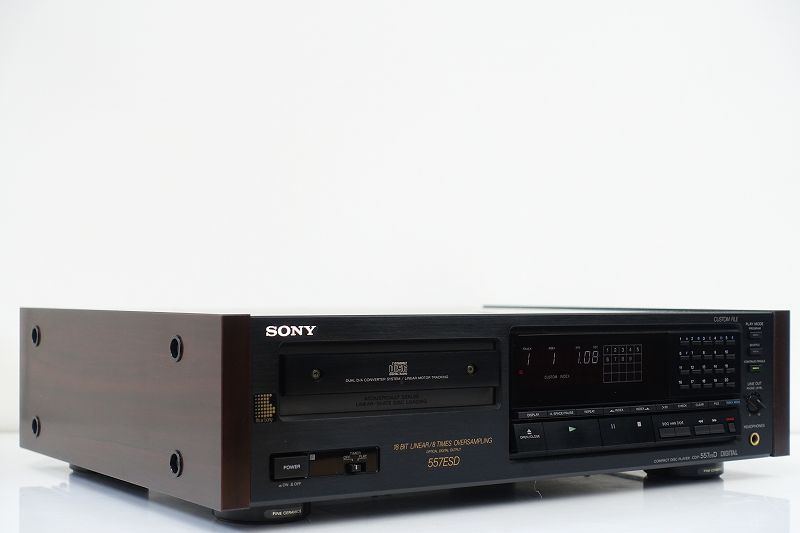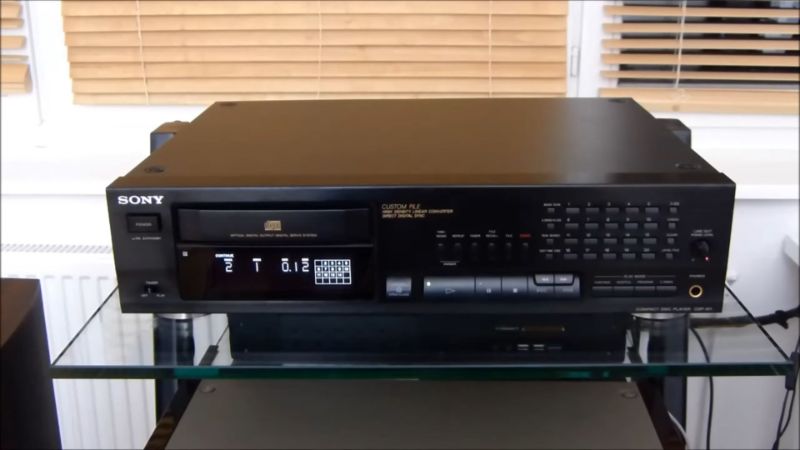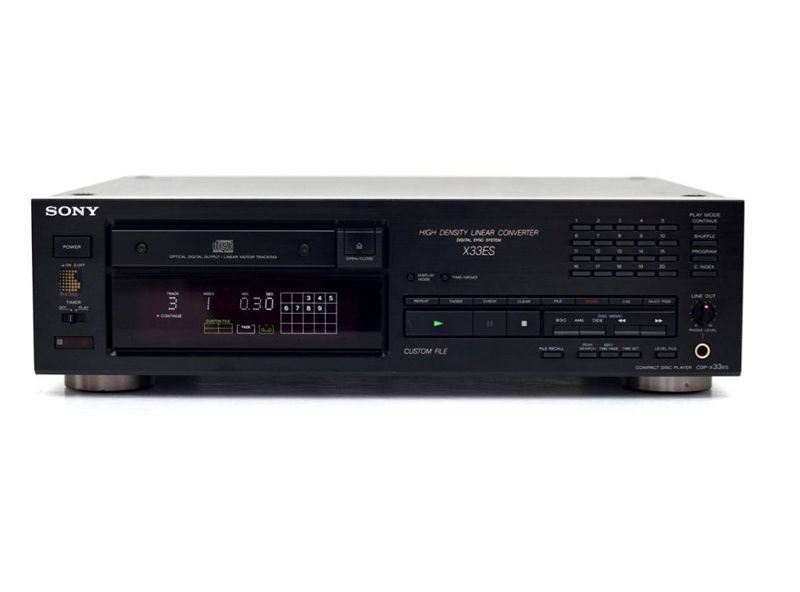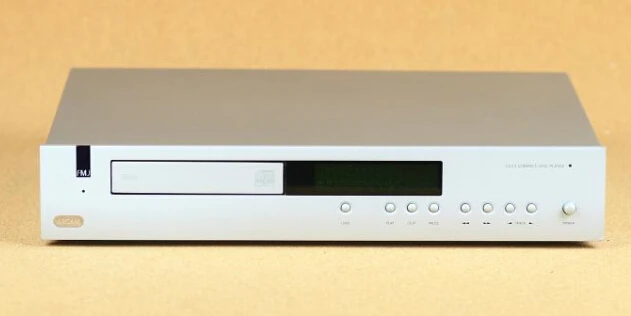Philips, being the creators of the CD format, were understandably the first to market with CD players, however an avalanche of designs from the Far East shortly followed.
We had previously reviewed the Philips CD100, and it is still considered the ‘baby’ of the Philips series. The CD303 reviewed here is Philips’ largest machine and has been slightly modified from the original CD300 design, with the main difference being the addition of a visual display in real time (minutes and seconds) of the elapsed time of the individual track in play – or, on pressing a switch alongside the display, from the disc’s start.
The CD303 is a front-loading machine, with the disc drawer sliding forward and the disc pressure plate rising to show the disc platform when the Open/Close button is pressed. When you press the Open/ Close button again, the drawer slides back into place, ready to play. When you press the Play/Next key, the disc will start spinning and the machine will display the total number of tracks on the disc (by illuminating the appropriate number of LEDs in a row of 15) and begin playing from the beginning once it has read the ‘Table of Contents’ data. At any point, more taps on this Play/Next key will cause the scanning laser to jump to the beginning of the next track.
If it is desired to play from a track other than Track 1 after loading a disc, there is a ‘Select’ button that can be tapped the required number of times to move the laser along to the desired track (as indicated by flashing of the LED selected). Then press the Play/Next key to begin playing. This ‘Go-to’ feature can also be used to skip or return to any track at any moment during playback. When you press the Repeat key during a game, a ‘Repeat’ LED will light up and play continuously until you cancel it by clicking the Repeat, Stop, or Open/Close key. The Reverse and Forward keys allow for a quick scan of the disc, which is supported by the real-time display. The Forward and Reverse keys can be used to seek a desired passage more quickly after utilizing the Go-to mode to discover the proper track. The Pause key is self-explanatory, and there’s also a handy programming feature that allows you to play up to 15 track entries in whatever order you like.
This employs the Select and Store keys, with the former being used to identify each required track number and the latter being used to store that number in memory. Each time a track is saved, its LED is lighted, allowing the selected program to be displayed gradually. Instead of using the ‘Add-in’ programming technique, you can use the Store function in conjunction with taps on the ‘Cancel’ key to arrive at a desired sequence by eliminating unwanted tracks in a ‘Take-out’ procedure. The machine can play discs with more than 15 tracks, however it cannot be set to pick tracks with higher numbers.
The CD303 comes with a folder containing a sampler disc with 15 pop and classical music, a cleaning cloth, pamphlets on how digital audio works, a catalogue of CD discs, a complete user’s manual, and an application form to join the Philips Compact Disc Club, as do all Philips CD players (to receive regular mailing of new titles, etc.). A captive twin lead terminates in left/right labelled phono jacks for audio output. Performance I carefully removed the two safety transit screws and stored them in the slots wisely given in the user’s folder, then connected the mains cable and plugged the phono-plugs into ‘Auxiliary’ on my hi-fi equipment, as any new purchaser would. The next logical step was to play the Sampler disc, which I was pleased to discover was a fresh compilation rather than the older Philips Sampler (which I now know almost by heart). I quickly realized that the quality of reproduction from this Philips player was every bit as good as their great compact CD 100 when I learned to use the track skip and programming options. The well-chosen sampler includes Elton John, Joan Sutherland, and Luciano Pavarotti, as well as Dire Straits, the English Concert, and the Academy of St Martin in the Fields – All with improved tone integrity over the previous sampler. These amazing subjective ratings were finally confirmed by measurements. Crosstalk is also amazingly steady, averaging less than – 86dB overall, with only a slight increase to roughly – 80dB at 20kHz in the right channel.
Residual noise was – 92dB unweighted vs. full level, and even better with A-weighting, confirming the eerie silence that could be heard during music pauses on the best CDs.
The square-wave demonstrates the symmetrical ripple characteristic of Philips’ over-sampling followed by digital filtering – helping to explain the superb frequency response charts and highly clean treble and percussion reproduction. When compared to some of the Japanese rapid-cue machines, the Philips players’ search and locate capabilities are lacking, and it took roughly 15 seconds to travel from Track I to my ‘standard jump’ to Track 15. I was also unable to verify the advertised overall harmonic distortion of 0.005%.
Nonetheless, both of these characteristics are of sufficient quality to satisfy all practical requirements. The CD303’s excellent mistake correcting skills were the major surprise. It breezed through the Philips ‘Test 4A’ disc track interruptions, black dots, and simulated fingerprint tests, scoring a maximum 0.9mm and 0.8mm for the first two tests and without showing any signs of mistracking. This is excellent news, as it means that even slightly worn discs will play flawlessly on this computer. Shock-proofing was likewise excellent, with common household bangs and footfalls having little affect on playback.
Philips designers have definitely mastered the electrical and error correction requirements of CD reproduction to offer a player that sounds as well as any other. The lack of real-time cueing, index scanning, a headphone jack, variable output volume, and other gimmicks doesn’t detract from the sound quality, and the £450 price tag makes it superb value.








